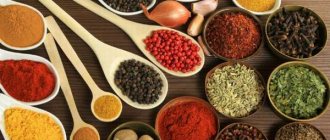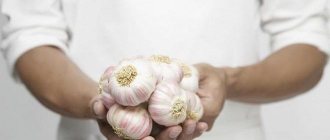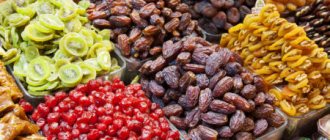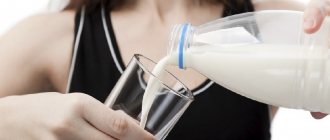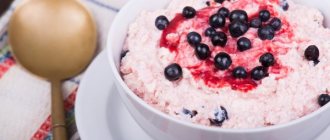Patients with pancreatitis do not have many foods in their diet that they can eat and enjoy their exquisite taste. Among such products, cheeses can be distinguished, but, unfortunately, not all.
It is not recommended to use for pancreatitis:
- processed cheeses;
- smoked;
- exotic varieties of cheese;
- hard cheeses;
- with various additives.
There are cheeses that you can try if you have pancreatitis:
- Adyghe;
- tofu cheese;
- feta cheese;
- varieties of low-fat cheeses.
Today we will talk about tofu cheese and whether it is good for pancreatitis. Will it harm your health?
The treatment of the disease is based on a strict diet, which will have a gentle effect on the pancreas. Doctors allow tofu cheese to be included in your diet, but stipulate that its choice must be approached with the utmost care.
The benefits and harms of cheese for pancreatitis
Cheese is a source of a large amount of vitamins: A, C, D, E, H, group B. This dairy product contains a large amount of protein, copper, zinc, selenium, calcium, iron, potassium, selenium. In addition, the content of valuable amino acids is high: tryptophan, methionine, lysine.
Cheese is especially useful for pancreatitis. It helps relieve inflammation, saturates the body with energy, improves metabolism, is absorbed by almost 100%, requiring minimal energy costs for digestion.
It is important, however, to choose the variety wisely. If you have pancreatitis, you should not eat large amounts of fat, so cheeses with a high fat content can harm the body.
In case of exacerbation of the disease, as well as an acute form of the disease, this product must be temporarily excluded from the diet.
How to select and store?
When choosing, it is important to pay attention to the composition, fat content, and date of manufacture. You should only buy cheese that does not contain dyes or preservatives. You should not choose types with additional additives. If the composition contains vegetable fats, this is a cheese product, which is not recommended for pancreatitis. The selected piece must be fresh, without signs of drying out, rotting, or mold.
Preference should be given to low-fat soft types without salt. It is acceptable to eat semi-hard cheese. Hard varieties can harm a patient with pancreatitis, they are too rough.
The product must be stored in the refrigerator. Eating cheese that has expired is strictly prohibited. Storage recommendations should be followed to avoid premature spoilage and drying out.
Varieties
The choice of variety is of great importance. When choosing cheese for pancreatitis, pay attention to goat cheese, which contains beneficial bacteria, and unsalted sheep cheese.
Low-fat
Among low-fat, low-calorie varieties, you should give preference to Adyghe, feta without salt, suluguni, mozzarella.
Soft types would be a good choice: ricotta, mascarpone. These varieties can be eaten for pancreatitis and gastritis, as well as cholecystopancreatitis. It is recommended to start introducing cheese into the patient’s diet with these types due to their consistency close to curd mass.
Of the semi-solid varieties, Tilsitter, Russian, Dutch, and Maasdam are good for illness. You can start eating them only after soft types are introduced into the menu.
In the chronic stage of inflammation of the pancreas, you can eat tofu without additives. Smoked soy cheese is not recommended for the patient.
Fat
People with inflammation of the pancreas are prohibited from eating processed cheese, since they contain a large number of additives and vegetable fats. The manufacturing technology of this product does not comply with the rules that should be followed when preparing food for a patient. Low quality dairy raw materials are often used for its production.
Varieties with mold are also prohibited; they can worsen the condition and cause aggravation. Mold increases the secretion of pancreatic enzymes and can aggravate the condition of the damaged organ.
Of the fatty types, moderate consumption of feta cheese is allowed. Preference should be given to a product without salt.
Source: pankreatit.guru
The pancreas, like any other organ, plays a vital role in the human body.
First, it produces enzymes necessary for digestion. Secondly, the pancreas produces the hormone insulin , which is responsible for the absorption of glucose in the body.
Insulin is of great importance for proper metabolism. Pancreatitis is inflammation of the pancreas. It occurs when the digestive enzymes of the pancreas, for one reason or another, damage it from the inside. Pancreatitis can be acute or chronic. In case of acute pancreatitis, urgent hospitalization and adherence to the “therapeutic triad” are necessary: cold on the stomach, hunger and rest.
Chronic pancreatitis is characterized by alternating periods of exacerbations and well-being. Patients suffering from chronic pancreatitis are required first of all to follow a strict diet , which improves the condition of the pancreas and prevents complications.
Nutritionists identify 5 products that are not only safe for pancreatitis, but also have a healing effect:
1) Yogurt, kefir and yogurt with beneficial bacteria (lacto- and bifidobacteria). These probiotic foods are key to the diet. Live bacteria in yogurt restore the balance of microorganisms in the intestines and affect the immune system, thereby helping to prevent inflammation.
2) Vegetable soups cooked without meat. Tomato soup is especially good , as it is rich in antioxidants that protect pancreatic cells.
3) Spinach - suitable both as a component of salads and as a side dish to the main dish. Experts say that a diet for pancreatitis should contain enough iron and B vitamins. Spinach can help meet this requirement.
4) Tofu cheese - considered a versatile source of protein as an alternative to meat.
5) Red wine and red grapes. Red wine is rich in a special antioxidant called resveratrol. This substance is nicknamed the “elixir of youth” for its beneficial properties. According to various studies, it exhibits antitumor, anti-inflammatory, and antidiabetic properties. In addition, it has a positive effect on the health of the heart and nervous system. But remember that it is contained in sufficient quantities in red wine and in the skins of red grapes.
Now let's talk about foods that should be avoided during pancreatitis - these are everything that puts increased stress on the pancreas, which means it can provoke a new attack:
- Alcohol (except for a small amount of red wine occasionally), nicotine, caffeine.
- Fatty foods. If you cook using oil, then choose healthier options - vegetable oils, such as olive or sunflower. But remember that even vegetable fats should be consumed in very small doses. As for fruits, exclude avocado because of its high fat content. It is also necessary to reduce the amount of so-called trans fats , which are found in store-bought cakes, donuts, cookies, burgers, chips, fried and deep-fried foods. Instead, it is better to eat more baked goods.
— It is also advisable to exclude red meat. Replace it with fish, legumes, tofu, which will provide enough protein. If you can’t give up meat, eat only lean, low-fat meat (for example, skinless chicken breast).
- Also abstain from sugar and white bread. Instead, eat whole grain bread and try replacing sugar with honey.
— Too spicy dishes can easily provoke an attack of pancreatitis.
- Carbonated drinks - the carbon dioxide they contain is also not desirable for pancreatitis.
— Minimize your consumption of known allergens (for example, whole milk, eggs, soy, corn and various food additives). Eating an allergen can provoke an exacerbation of pancreatitis, so if you are allergic, consult a doctor to conduct special tests and identify the causes of the allergy.
The remaining recommendations correspond to the general rules of healthy eating:
- Avoid two or three large meals a day. Eat 5-6 times a day in small portions.
- Pay special attention to foods with antioxidant properties and vitamins. Antioxidants reduce inflammation and protect cell membranes from destruction, and with pancreatitis it is the cell membranes that are damaged. Patients with chronic pancreatitis often have low levels of antioxidants in the blood. According to many studies, complexes with vitamins C, E, selenium and beta carotene (if taken regularly) can reduce pain during an attack and reduce the likelihood of complications in chronic pancreatitis. In addition, preparations with polyunsaturated fatty acids and coenzyme Q 10 . But before you start taking it, you should consult your doctor.
- Maintain your weight within normal limits (body mass index 19-25), because obesity can not only increase the risk of pancreatitis, but also aggravate the disease.
To summarize, the treatment of pancreatitis is based on the following points:
1) No or low fat diet; 2) The diet should be rich in fiber; 3) Consumption of large quantities of vegetables and fruits, and the number of vegetables to the number of fruits should be ratioed as 3 to 2; 4) Protein should be obtained from low-fat foods; 5) Take additional vitamin and mineral complexes; 6) Drinking plenty of fluids helps eliminate toxic metabolic products resulting from the disease
Diet for chronic pancreatitis requires a careful and serious approach. Knowing the problem and having the right attitude towards it will help you keep in shape and maintain health for many years.
Source: FoodLover.Ru Author: Alexander Achinovich (doctor)
Source: www.liveinternet.ru
Dairy products and their derivatives for pancreatitis
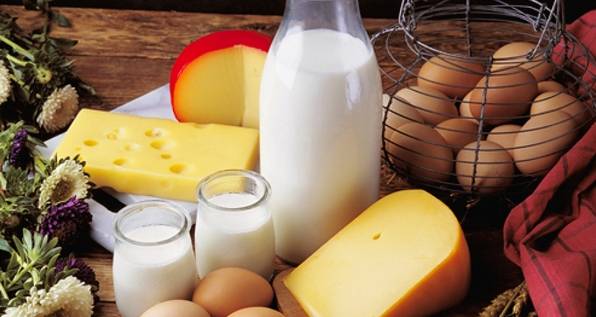
Milk, as well as dairy products, form the basis of nutrition for a patient with an inflammatory process of the pancreas, from here it is possible to answer the question “is it possible or not to have cheese for pancreatitis?”
Milk is a product rich in macroelements, essential amino acids, fats that only bring benefits, and cheese is a product with various chemical properties obtained from milk.
In the modern world of technology, the abundance of cheeses presented on store shelves puzzles any buyer. Cheese production methods also vary:
- the first method of creating cheese involves the use of enzymes and lactic acid bacteria;
- In the second method, cheese is created by melting various dairy products, plus non-dairy raw materials are used.
At first glance, everything is harmless, but the slightest flaw in observing the technology for creating cheese can affect its structure and, if consumed, cause harm to the body.
Another note: often behind the large letters “cheese” on the label there is a cheese product that does not contain a drop of milk.
Eating cheese for pancreatitis is not only acceptable, but also necessary, all that remains is to figure out which one is allowed and when, and which one is better to refuse.
Pancreatitis and processed cheese
Recently, the media has made negative advertising about processed cheese, and many lovers have become wary of this product.
It turned out that during the production process various substances are added to it to adjust the taste, color, smell, and density of the cheese. These components can have a detrimental effect on the body of a healthy person, and it is completely undesirable to consume processed cheese for pancreatitis.
Despite the fact that this product is completely absorbed by the body, its additional substances harm the pancreas. If the illness worsens, eating dishes that contain processed cheese is prohibited.
Is it possible to use processed cheese for pancreatitis that was prepared at home? The only solution to the problem for lovers of this type of cheese is to make it yourself, bypassing all prohibited ingredients.
Is it possible to eat cheeses for chronic and acute pancreatitis?
The health of the pancreas directly depends on a person’s lifestyle. Only the person himself is responsible for her condition. This is a very important and vulnerable organ. With an incorrect lifestyle, it is easily damaged and difficult to restore and treat. You should lead a correct lifestyle, then you won’t have to spend time and money—considerable—on restoring your health. A healthy lifestyle and its components is an image or lifestyle aimed at improving and strengthening the human body, preventing various types of diseases, and maintaining health at the proper level. Currently, the world is undergoing a rethinking of its attitude towards its own health. The basics of a healthy lifestyle are a minimum of bad habits with a maximum of useful ones that help improve people’s quality of life. Anyone who follows the basic rules of a healthy lifestyle stands out from others: he has a fresh complexion, good posture and a lively look, and is always full of energy and a desire to try something interesting. It is impossible not to notice him against the backdrop of people with gray, puffy faces, voluminous bellies, shortness of breath and stooped backs, barely carrying themselves through life from the sofa to work.
How to prepare cheesecakes for pancreatitis recipe - a complete description of the preparation so that the dish turns out very tasty and original. A balanced diet is the most important basis of treatment and the main support on the path to recovery from pathological processes in the form of pancreatitis and cholecystitis, affecting the parenchymal gland and the cavity of the gallbladder.
When can a patient add cheeses to the menu?
Is it okay to have cheese if you have pancreatitis? It is possible, but not in all cases. In the acute stage of the disease, cheese products are strictly contraindicated. During this period, the pancreas needs to be unloaded, creating a state of rest, which cheese dishes cannot provide.
Dairy fats stimulate the production of gastric juice, which is undesirable during treatment.
After a month of productive treatment, doctors allow cheese to be eaten. At first these are soft varieties, later you can include semi-hard ones. The fat content of the product should not exceed 30%.
The dose must be increased gradually, starting from 15 grams per day.
When can you eat cheese if you have pancreatitis?
During an attack of acute pancreatitis or during an exacerbation of a chronic form of the disease, cheese is strictly prohibited. This product is quite solid and has a fairly high fat content, so it does not comply with the principles of dietary nutrition recommended in the acute phase of inflammation of the pancreas.
eat cheese for pancreatitis during a period of stable remission , introducing it into the diet no earlier than 30 days after the onset of exacerbation.
The first portions of this product should not exceed 10-15 grams, and it can be consumed 2-3 times a week. The optimal dose of cheese is from 50 to 100 grams as an addition to salads or main courses. You can also eat it as a separate meal (for example, an afternoon snack). Start eating cheeses with the safest varieties (soft, unsalted and mild), after 2-3 weeks you can start using semi-hard varieties.
Rules for choosing cheese during an inflammatory process
Thousands of varieties and thousands of criteria by which cheese is purchased and becomes your favorite:
- hardness;
- fat content;
- constituent components;
- manufacturing process;
- original product;
- additional flavoring ingredients.
A patient with signs of pancreatic inflammation is not allowed to include all types of cheese in his food.
In order not to be mistaken about what kind of cheese you can use for pancreatitis, first of all it is important to pay attention to the ingredients. A set of substances that should not be in the product:
- flavorings;
- flavor additives;
- vegetable fats.
You cannot buy cheese that is nearing its expiration date or in a damaged shell. Types of cheeses for pancreatitis that are strictly prohibited to eat:
- processed cheese - due to the fact that it contains a lot of salt, flavorings, flavor enhancers and dyes;
- smoked cheese products - the danger is that they can increase the secretion of gastric juice, they also contain excess salt and flavorings;
- hard cheese – excessive fat content and density are unacceptable for a patient with pancreatitis;
- a variety of blue cheeses - they only aggravate the work of the pancreas;
- cheeses with the addition of nuts, herbs, seasonings.
When choosing cheese for pancreatitis and cholecystitis, it is important to adhere to some rules:
- the totality of the components of the product - read the labels carefully, the cheese must be made only from milk, without inclusions, flavor enhancers, color, or smell;
- fat content no more than 30%;
- of the highest quality - without signs of deterioration or damage;
- There should be no unnecessary components - even harmless low-calorie cottage cheese can spoil the herbs or nuts added to it.
Cheese for chronic pancreatitis
Consumption of curd products for chronic inflammation of the gland is possible only if the patient has entered a state of stable remission. In this case, the first portion is allowed to be introduced into the menu only a month after the end of the attack of the disease.
Even if there are no symptoms of pancreatitis, too many animal products in the diet can cause a new attack of inflammation and cause an exacerbation.
Thus, the maximum amount that is allowed to be consumed during the day is one hundred to two hundred grams (depending on the variety). In this case, it is best to choose products with low fat content and density. It is better to limit the consumption of hard and fatty foods.
The best low-fat cheese for patients
Based on the fact that patients with inflammation of the gastrointestinal tract are allowed to consume dairy products with a fat content of less than 30%, low-fat cheeses for pancreatitis are a pleasant bonus to a meager menu.
The presence of fats will always be indicated by the label on the packaging; the main thing is that the appearance and expiration dates are also acceptable.
What cheeses are the least fatty:
- Gaudette cheese;
- ricotta - cheese made from whey;
- Mozzarella;
- tofu - soybean curd;
- curly fibrous cheese Chechil;
- Greek feta cheese and many others.
As noted by medical experts and nutritionists, any amount of low-fat cheese consumed by patients with pancreatitis does not cause any harm and does not disrupt the functioning of the pancreas.
Is it possible to eat cheese?
Bryndza is a pickled type of cheese made from the milk of a cow, goat or sheep. It contains a minimum of fat and has a soft consistency with a two-month aging period.
Cheese is easily digestible and does not contribute to excessive production of gastric juice, which is important for patients with pancreatic inflammation.
Cheese cheese for pancreatitis is an acceptable and safe product. In any phase of the disease (from acute to chronic), patients are allowed to consume this dairy product. The only “but” is that the cheese is unsalted.
Adyghe cheese in the diet
One of the best dairy products that is useful for pancreatitis is Adyghe cheese. This type of cheese got its name because of the territory of origin - the Republic of Adygea.
It is produced from sheep, goat and rarely cow's milk. It is soft in consistency, belongs to the group of cheeses without ripening and will not hold back strong flavoring additives.
Adyghe cheese for pancreatitis is an ideal solution. The delicate milky smell and taste, softness, freshness, and low fat content of the product allow you to use it as an independent dish without worry, or add it to various salads and sandwiches. Adyghe cheese can be added to the diet in case of acute and chronic stages of pancreatitis.
Curd cheese should not be consumed for pancreatitis during the acute stage of the disease. And although it has a soft texture and is fully absorbed by the body, its fat content and texture disrupts the necessary rest and activates the secretion of the pancreas.
The best cheese product for a patient with pancreatitis will be cheese prepared independently, controlling the naturalness of the products and regulating their fat content.
Source: opankreatite.ru
Features of eating cheese for pancreatitis
Cheeses for cholecystitis, pancreatitis and gastritis can be consumed in their pure form, mixed and added to various dishes in limited quantities. In this case, the quality of the products will also play an important role, which will require close attention.
Processed cheese
Unlike many other types of cheese, processed cheese is almost completely absorbed by the body of a healthy person. But despite this, it is not recommended to eat processed cheese if you have pancreatitis of any kind or form.
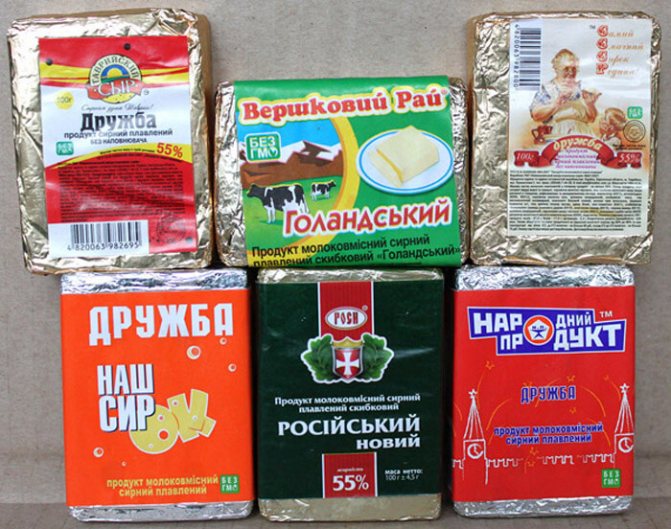
This is due to the fact that most varieties of the product are made with a large number of chemical additives, salts, dyes and flavors that are harmful to the digestive organs. Cheese often contains fillers that are dangerous for patients with pancreatitis. Because of this, processed cheese cannot be considered safe for pancreatitis.
Brynza
High-quality cheese has a short aging period and does not contain harmful components. In addition, the cheese does not contain a large amount of heavy fat, due to which the product is perfectly absorbed by the body.
Meanwhile, with pancreatitis, it is possible to eat only unsalted varieties of cheese. Otherwise, the product can cause aggravation.
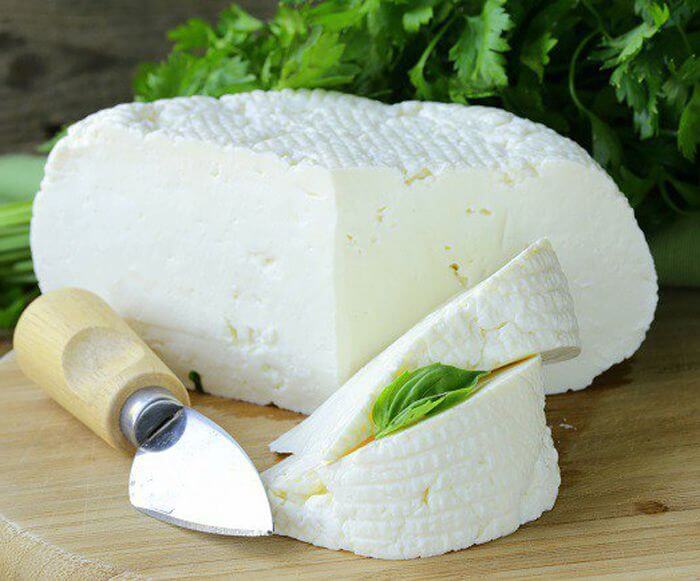
Dutch cheese
The Dutch variety is prepared using a more complex technology and has a long aging period, which is why it can be dangerous for the pancreas in case of pancreatitis. However, its use is possible in strictly limited quantities.
At the same time, if you melt cheese using temperature, you can remove excess fat released on the surface. Meanwhile, it is necessary to monitor the patient’s condition to prevent relapse. Even a small amount of Dutch cheese can be introduced into the diet only with stable remission.
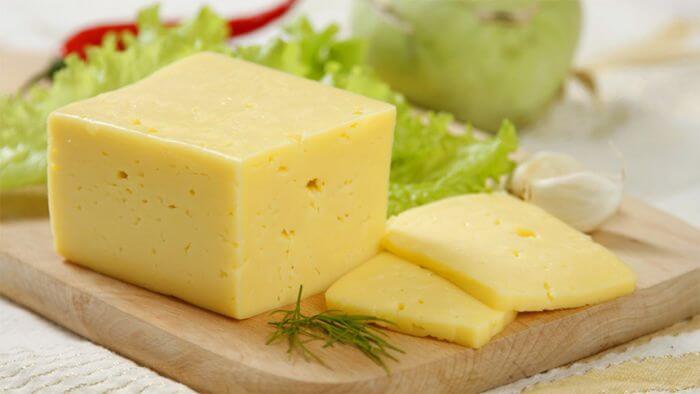
Adyghe cheese
This type of cheese has low fat content and invaluable dietary properties. However, some manufacturers add too much salt to the product, making it potentially harmful to the pancreas.
In other cases, Adyghe cheese is recommended for a therapeutic diet for pancreatitis in a volume of up to two hundred grams per day. In case of chronic pancreatitis, Adyghe cheese helps normalize digestion, improves the condition of intestinal microflora and strengthens tissues.
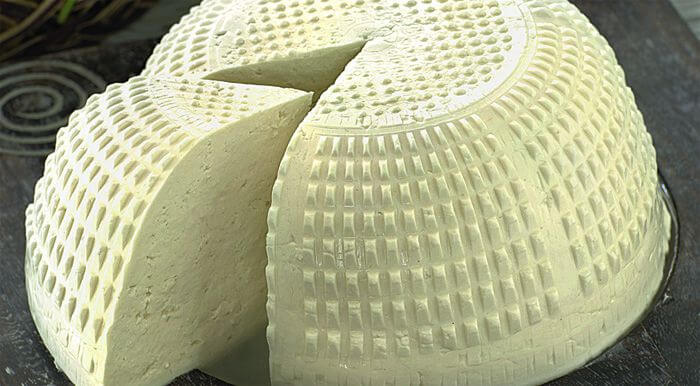
Low-fat varieties
Low-fat varieties are those in which the percentage of lipids does not exceed ten percent. Among them:
- Gaudette (or Gouda).
- Tofu (bean curd, does not melt).
- Mozzarella.
- Greek.
- Ricotta.
- Goat and sheep.
- Chechil.
These varieties are easily absorbed by the body and also reduce the burden on the digestive system. In addition, they contain a large amount of amino acids and are low in calories, making them recommended for dietary and fasting meals.
1Benefits and harms
Cheese is a source of animal protein. This product is rich in useful substances. It contains calcium, potassium, copper, iron, phosphorus, zinc, sodium, and beneficial bacteria. It is also rich in vitamins A, E, C, H, D and group B. Cheeses contain tryptophan, an amino acid necessary for the production of serotonin.
Cheese for pancreatitis saturates the body with essential substances.
It helps fight depression, improves mood, stimulates appetite and normalizes the production of gastric juice. The phosphatides contained in the composition normalize metabolic processes. Milk fat from cheeses is easily digested without loading the damaged organ.
Incorrectly selected varieties can cause harm. If the cheese is too fatty, it will be difficult to digest. Hard varieties can cause mechanical injuries to the digestive organs, which will worsen the patient’s condition.
Spicy cottage cheese for pancreatitis
A distinctive feature of this disease is acute stomach pain and a defect in the quality functioning of the organ. A therapeutic diet for illness does not require much variety in dishes and products. In this regard, patients often ask whether cheese is allowed for pancreatitis. This question cannot be answered unambiguously; in most cases it depends on the individual characteristics of the organism, as well as the variety and quality of the product. Cheeses are high in fat, lactose and easily digestible protein. It also contains a large amount of calcium, which preserves bone structure and helps tissue renew itself.
2How to select and store
When choosing a dairy product, pay attention to the amount of fat. Fat content should be no more than 30%. Look at the expiration date. The patient can only eat fresh food. Avoid pieces that show signs of drying out.
Buy only real cheese. You should not purchase a cheese product because it contains vegetable fats.
Avoid additives: dyes, preservatives, flavor enhancers, nuts, mushrooms, herbs. Smoked and smoked varieties are prohibited: they retain fluid in the body and create excessive stress on the pancreas.
Follow storage rules. Wrap the cheese in cling film to prevent it from drying out and put it in the refrigerator. If the product begins to spoil, do not eat it as it may be harmful to your health.
Cheese for acute pancreatitis
During any period of acute inflammatory process, as well as at the stage of exacerbation of chronic pancreatitis, eating cheese is dangerous. During this period, nutrition should be included in a special gentle regime that does not allow large loads on the pancreas and digestive tract.
Thus, cheese can become too heavy a food, which can worsen the patient's condition or cause a long and painful relapse.
3Varieties
At different stages of the disease, it is permissible to consume different types of healthy product. To find the types that are right for you, consult your doctor.
In the acute form and exacerbation of the disease, it is strictly forbidden to include cheeses in the patient’s diet. They stimulate the secretion of pancreatic enzymes and can cause severe pain.
If you have cholecystopancreatitis, avoid hard varieties. If you suffer from both pancreatitis and gastritis, avoid goat and sheep cheese.
In the chronic stage of the disease, a healthy product is allowed to be included in the menu. Its amount should not exceed 50-100 g per day.
Low-fat
For patients with pancreatitis, soy cheese tofu is suitable. This product has a soft consistency and is easy to digest. Its fat content is low.
If pancreatitis is not accompanied by gastritis, include suluguni and Adyghe cheese in the menu. These low-fat soft varieties will enrich the diet and saturate the body with essential nutrients.
Eating a small amount of feta is allowed. You should not overuse this variety, as it contains a lot of salt.
Fat
Patients with pancreatitis can eat fatty cheese in small quantities. Give preference to cheese. This mild variety is easy to digest and does not create unnecessary stress on the affected organ.
You will have to give up processed cheese. For their production, low-quality raw materials are used that are not suitable for the patient.
Their fat content is too high. Often the composition contains various additives: mushrooms, sausage, cream or cottage cheese, pieces of vegetables, herbs. Blue cheese is also prohibited. Moldy varieties are difficult to digest and can cause pain and digestive disorders.
Source: gastri.ru
